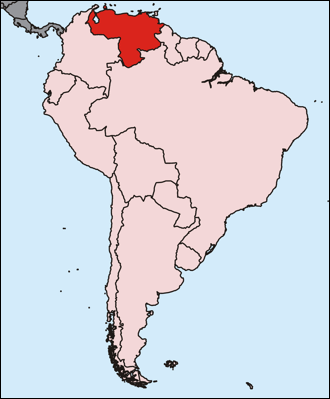 While many people are aware that "America" (often used to refer to all of "the Americas") was named after Tuscan explorer and cartographer Amerigo Vespucci, few people know about the naming of Venezuela.
While many people are aware that "America" (often used to refer to all of "the Americas") was named after Tuscan explorer and cartographer Amerigo Vespucci, few people know about the naming of Venezuela.From geographia.com: Venezuela - History & Culture
Christopher Columbus was the first European to visit Venezuela. He came in 1498 during his third voyage to the New World, and landed on the Peninsula de Paria. Following the coast, he explored the Rio Orinoco Delta and concluded that he had found much more than another Caribbean island. More explorers came a year later, and it was Alonso de Ojeda who gave the country its name. Arriving at Lake Maracaibo, he admired the stilted houses that the Indians had build above the lake and called the place Venezuela - "Little Venice."
From Wikipedia: Venezuela - Etymology
The name "Venezuela" is believed to have originated from the cartographer Amerigo Vespucci who, along with Alonso de Ojeda, led a 1499 naval expedition along the northwestern coast's Gulf of Venezuela. On reaching the Guajira Peninsula, the crew observed villages (palafitos) that the people had built over the water. This reminded Vespucci of the city of Venice (Italian: Venezia), so he named the region "Venezuola",[5] meaning "little Venice" in Italian. In Spanish, the suffix -zuela is used as a diminutive term (e.g., plaza / plazuela, cazo / cazuela); thus, the term's original sense would have been that of a "little Venice".[6]
5 - Dydynski, K & C Beech (2004), 'Venezuela, Lonely Planet', Retrieved on 10 March 2007. p. 177.
6 - Thomas, Hugh (2005). 'Rivers of Gold: The Rise of the Spanish Empire, from Columbus to Magellan'. Random House, p. 189.
 From MSN encarta: Venezuela - History Christopher Columbus first sighted the coast of Venezuela in 1498. In 1499 Spanish explorer Alonso de Ojeda followed the coast to Lake Maracaibo. He named the region Venezuela, or Little Venice, because the Native American buildings constructed on stilts along the lake’s edge reminded him of the Italian city of Venice, which was built on a series of islands in a lagoon.
From MSN encarta: Venezuela - History Christopher Columbus first sighted the coast of Venezuela in 1498. In 1499 Spanish explorer Alonso de Ojeda followed the coast to Lake Maracaibo. He named the region Venezuela, or Little Venice, because the Native American buildings constructed on stilts along the lake’s edge reminded him of the Italian city of Venice, which was built on a series of islands in a lagoon.[Above: a palafito, similar to those seen by Amerigo Vespucci]
From the University of South Florida website: Multicultural Education Through Miniatures: Venezuela - Little Venice (by Maria; a Venezuelan)
Venezuela was “discovered” by Spanish explorers many, many years ago. When they landed on the coast of South America, they saw Indians living in stilt houses. The Indians were using boats that were shaped like gondolas. The country looked like Venice, Italy, so the explorers named it Venezuela, which means “Little Venice.”
**************************************************
Venezuela today has not remotely the significance to me that Argentina does, but the naming of a country is significant, even if it was due to a vague comparison of stilt huts on a tropical shoreline to the slendor of Venice (which is further north than Minnesota). Venice is the most visited city in the world, but we can get to that at some future point. Also significant was that Vespucci was right there with the Spanish troops when Venezuela was named. I don't think that de Ojeda was motivated to name it "Little Venice" just because Vespucci was there. Vespucci was a Florentine anyway. However, it's possible that Vespucci may have made the reference to Venice. I don't know if that was ever clarified.

No comments:
Post a Comment